This post will show you How to Make the Best Charcuterie and Cheese Board that is homemade and epic, ready to serve on the menu for holidays, parties, and events. This DIY platter consists of an Italian meat and cheese tray.
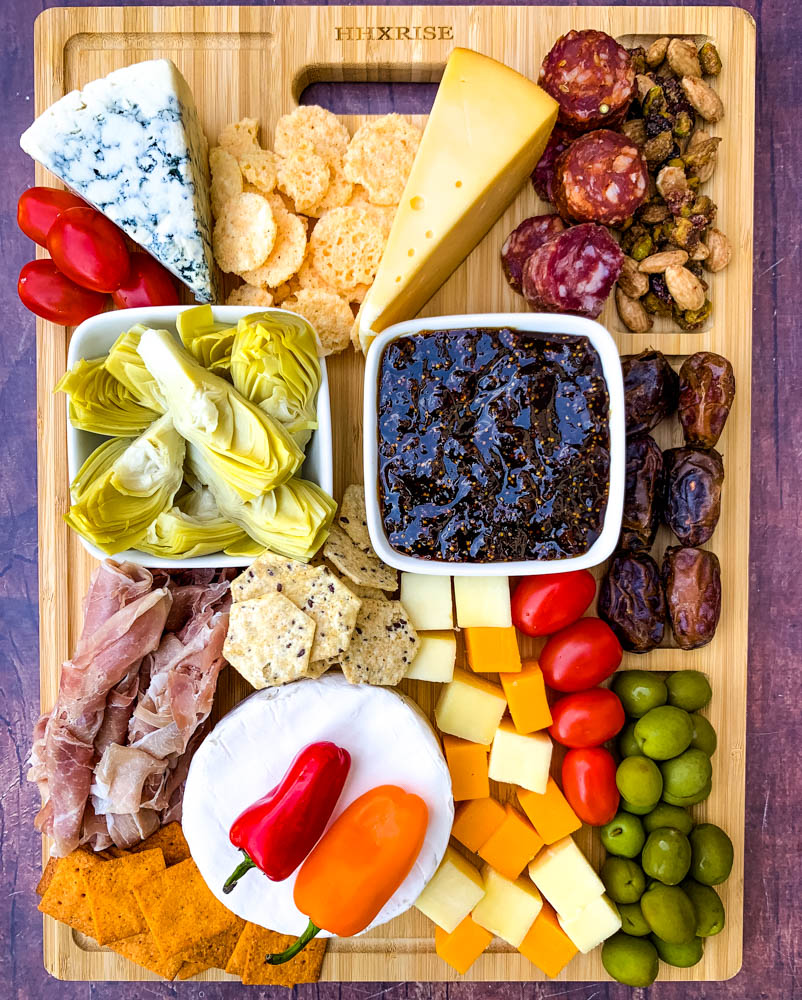
Want to save this recipe for later?
This post contains affiliate links. Please read my full disclosure here.
Table of Contents
What is a Charcuterie Board
How do you pronounce charcuterie? It is pronounced [shahr-koo-tuh–ree].
Traditionally, charcuterie is defined as the process of preparing and serving cured meats. The actual term charcuterie only refers to meat. If cheese served, the board is a charcuterie and cheese platter or tray.
The word charcuterie originates from Eastern Europe and means pork butcher. In French, the person that prepares the meat is the Charcutier. You can read more about What Charcuterie is and Means here.
The beauty of a charcuterie board lies in its versatility and the opportunity for creativity in arrangement and pairings. It's often served as an appetizer or as a centerpiece for social gatherings, allowing guests to sample and create their own flavor combinations.
When assembling a charcuterie board, consider a mix of flavors, textures, and colors to create an appealing presentation. The key is to balance the different elements and offer a diverse selection that caters to various tastes and preference
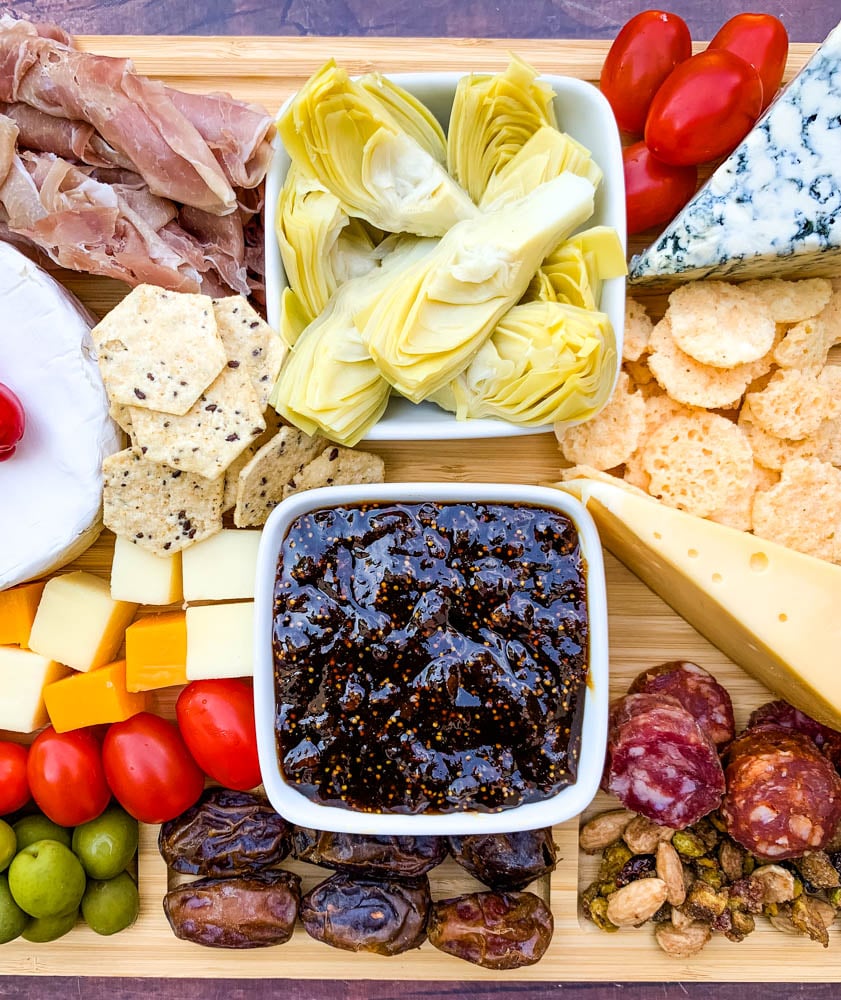
What Board or Surface to Use
A wooden cutting board is commonly used. Its neutral color helps bring out the vibrant colors of the ingredients going on the board. I like this cutting board from Amazon. Add it to your Amazon Shopping List. Consider the size of your spread and the variety of items you plan to include when selecting the board or surface.
Here are more options:
- Wooden Cutting Board: A classic choice, wooden cutting boards offer a rustic and natural look. They come in various shapes and sizes and provide a warm backdrop for arranging meats, cheeses, and accompaniments.
- Marble or Stone Slab: Marble or stone slabs offer an elegant and sleek presentation. They stay cool and can help maintain the freshness of the meats and cheeses. These are great for serving at more formal gatherings.
- Slate Board or Tiles: Slate boards or tiles provide a modern and stylish canvas for your charcuterie arrangement. They allow for writing the names of cheeses or meats using chalk, adding a personalized touch.
- Ceramic Platter or Plate: Large ceramic platters or plates offer a colorful and decorative option for displaying your charcuterie items. They come in various shapes and designs, adding visual interest to the spread.
- Metal Tray or Serving Dish: Metal trays or dishes, such as stainless steel or copper, offer a contemporary look. They can be used as a base for arranging smaller bowls or ramekins containing accompaniments.
- Reusable Cutting Boards or Cheese Boards: Specifically designed boards with sections for cheeses, meats, and accompaniments can make arranging your spread easier and more organized.
What to Include on the Platter
The board or tray typically includes a focus on pork for the meat. The board also includes an array of cheeses, pickles, flavored spreads, fruit, fresh veggies, crackers, or toast.
What Type of Meat to Add
The platter usually focuses on cured pork, whole muscle cuts and cured sausage. Aim for a variety of flavors and textures. Choose a mix of mild and bold options to cater to different tastes.
- Proscuitto - Italian dry ham, thinly sliced and served uncooked.
- Salami- fermented air-dried pork, typically seasoned with garlic and peppercorns.
- Spicy Chorizo - hard, dry, and cured pork with a smoky taste
- Sausages
I like to use uncured, nitrate-free versions of these as a healthier option. Most grocers carry uncured meat. I found mine in the health section of the grocery store.
Typically, you will want to include about 2oz of meat per person you plan to serve.
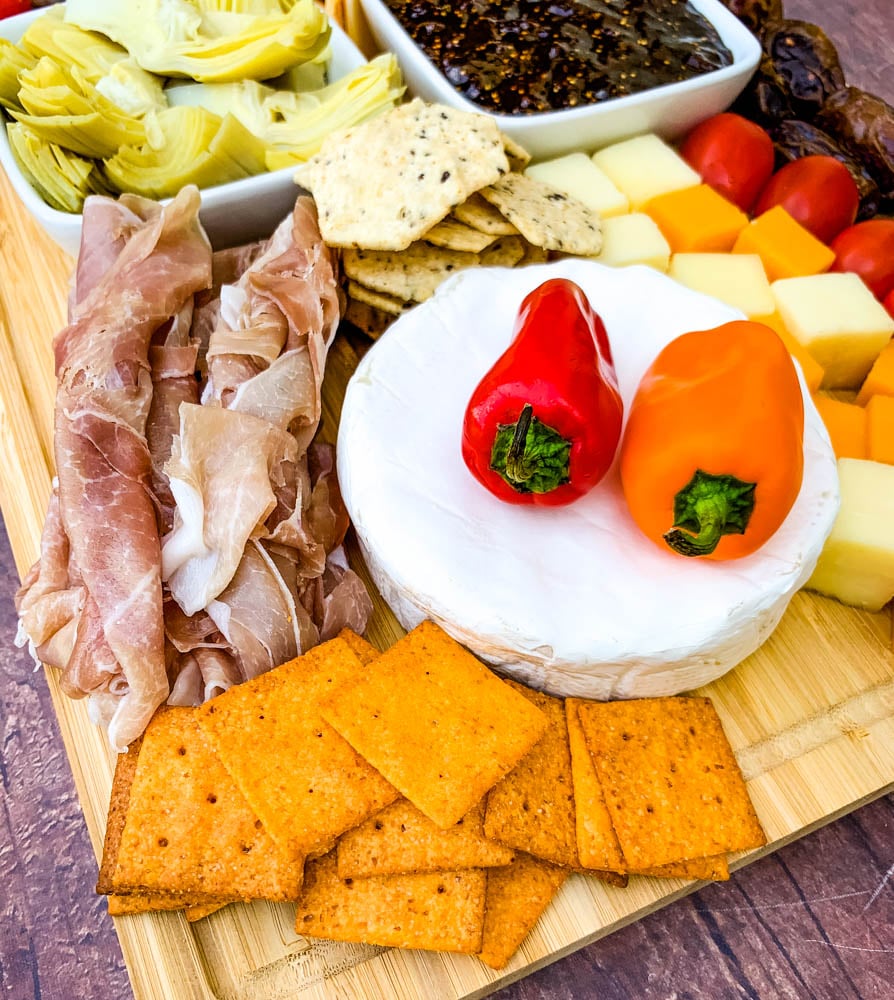
What Type of Cheese to Add
The combination of cheese on the board is really key. You will want to focus on balancing out the flavors and pairings. Consider including cheeses with different intensities, from mild to strong, to cater to diverse preferences among your guests. Also, include both familiar and more adventurous cheeses to create an engaging and enjoyable tasting experience.
Here are common types of cheese that can be used.
- Brie - Soft a creamy white cheese served with the rind (you eat the rind). Remove it from the fridge at least an hour prior to serving so that it comes to room temperature. Pairs well with sweet treats like honey and fig spread.
- Blue Cheese - pairs well with dried fruit, such as dates
- Gouda - pairs well with the cured meats
- White Cheddar (sliced into blocks)
- Aged Cheddar (sliced into blocks)
- Parmesan
- Goat Cheese - pairs well with olives and nuts
- Provolone
- Havarti
- Gorgonzola
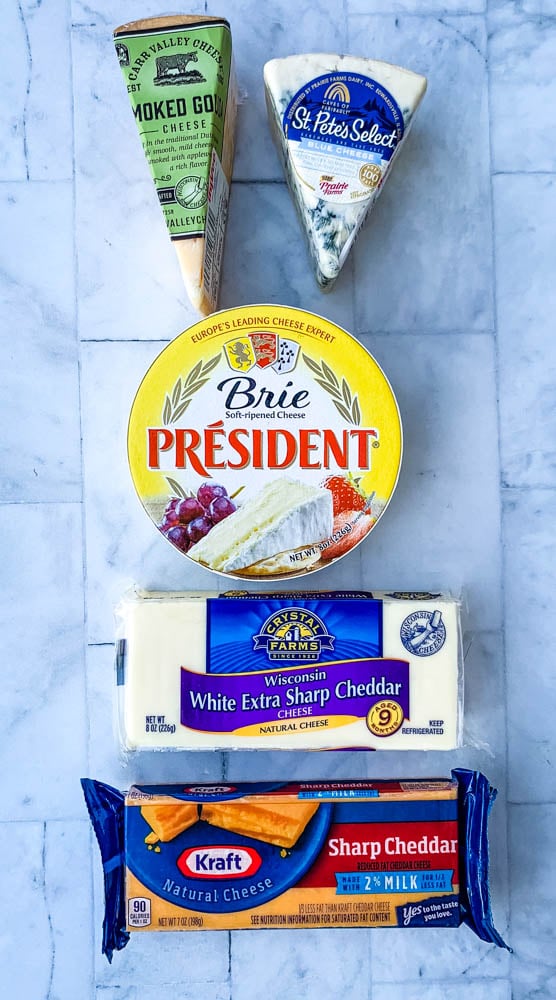
Brie is a must because of the shape. A white circular ring will look gorgeous on the board. You can add a pop of color by placing roasted red peppers on the top or any colored veggies will work well, too.
Blue Cheese is a must for me because it also provides gorgeous color. In my experience, many people do not like blue cheese, but some do!
Sweet Flavors You Can Add
When incorporating sweet items, aim for a balanced distribution across the board. Distribute them evenly among the meats, cheeses, and other accompaniments, ensuring a great blend of flavors.
- Grapes
- Apple Slices
- Berries
- Fig Spread
- Honey
- Dates
- Sliced Apples
- Red Pepper Jelly
- Chocolate
- Candied Nuts
- Nut Butter
- Shortbread or biscuits
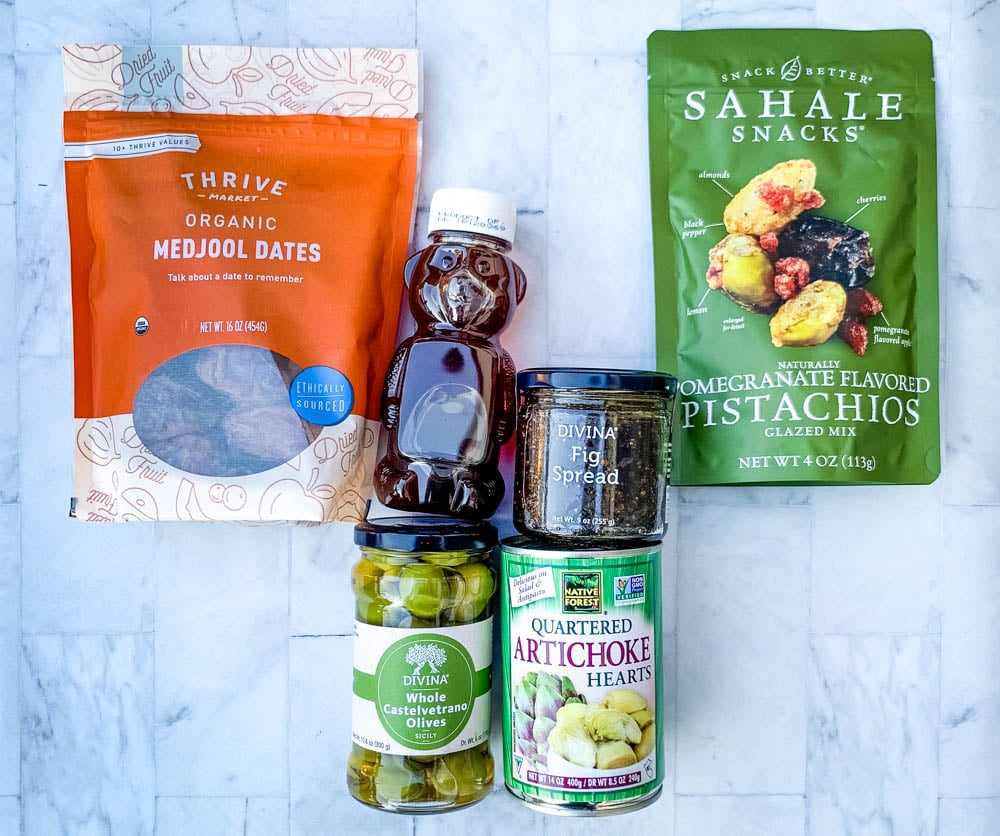
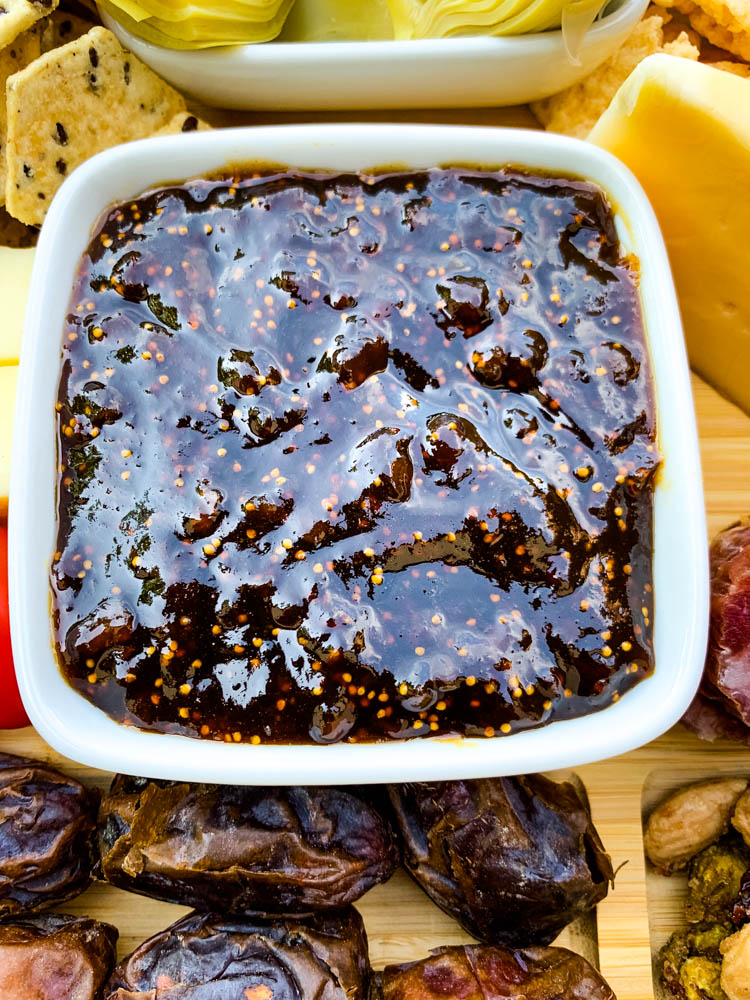
Savory Flavors and Vegetables
- Almonds
- Peanuts
- Pistachios
- Mini Fresh Peppers
- Pickles
- Olives
- Artichokes
- Marinated Mushrooms
- Roasted Red Peppers
- Hummus
- Guacamole
- Fresh Rosemary and herbs
Crackers and Chips
You can add any crackers to the board that you love. Here are a few of my favorites.
- Water Crackers: Thin and crispy, these crackers have a neutral flavor, allowing the meats and cheeses to shine.
- Plain or Sea Salt Crackers: Simple, unsalted crackers provide a basic canvas for the other flavors.
- Crispy Breadsticks or Grissini: Long, thin breadsticks offer a different texture and are ideal for dipping into spreads or enjoying with meats.
- Pita Chips or Crostini: Toasted pita chips or crostini provide a sturdier base for spreads or heavier toppings.
- Tortilla Chips: For a twist, consider adding sturdy tortilla chips, which can pair nicely with spicier meats or dips.
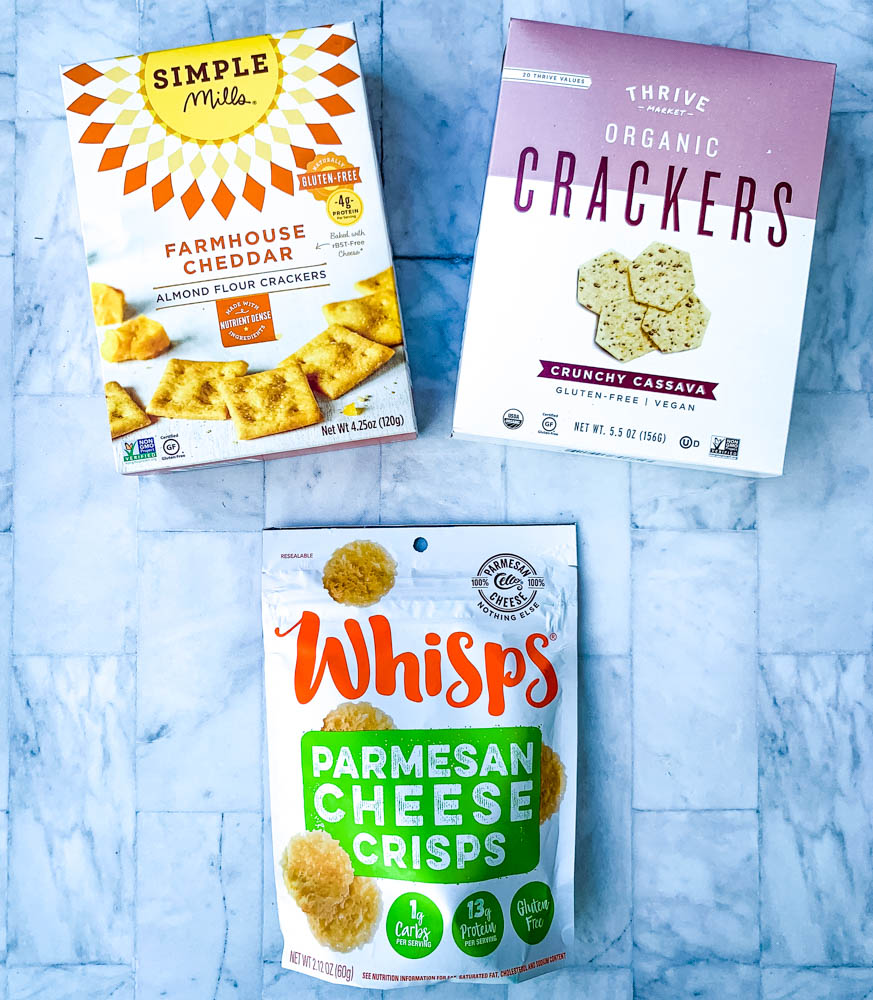
How to Make and Arrange a Charcuterie and Cheese Board
The first key to styling is to take your time. It doesn't take a significant amount of skill to lay the items neatly on the board, if you move a little slower than you normally would while preparing a dish in the kitchen.
There's no strict rule on how to arrange it. Get creative and have fun with it. The goal is to create an appealing spread that invites guests to indulge in a variety of flavors and textures.
- Start with Larger Items:
- Place larger items like bowls of dips, spreads, or condiments first, arranging them strategically around the board to create balance.
- Arrange Meats and Cheeses:
- Start by placing the meats and cheeses, and spreading them out in different sections or clusters. Consider folding or rolling the meats for an attractive presentation. Create height by layering or stacking slices.
- Add Variety with Accompaniments:
- Fill in the gaps with accompaniments like olives, pickles, nuts, fruits, and spreads, distributing them evenly across the board. Use small bowls or ramekins for loose items to prevent them from spreading.
- Incorporate Color and Texture:
- Mix and match colors, textures, and shapes for visual appeal. Alternate light and dark items for contrast, arranging complementary colors side by side.
- Create Visual Interest with Garnishes:
- Use fresh herbs, rosemary sprigs, or edible flowers to add a decorative touch. Sprinkle herbs around the board or place them strategically to enhance the presentation.
- Consider Accessibility and Flow:
- Ensure items are accessible from all sides of the board, allowing guests to reach without difficulty. Arrange items in a way that creates a flow, guiding the eye around the board.
- Fill Empty Spaces and Gaps:
- Fill any remaining empty spaces with smaller items like crackers, breadsticks, or chips. Keep these close to the dips or spreads they pair with.
- Personalize and Label:
- Consider adding small labels or tags to identify specific cheeses, meats, or unique items. This adds a personal touch and helps guests navigate the selections.
- Final Touches and Presentation:
- Step back and assess the arrangement. Make final adjustments for symmetry and overall presentation. Once satisfied, it's ready to serve!
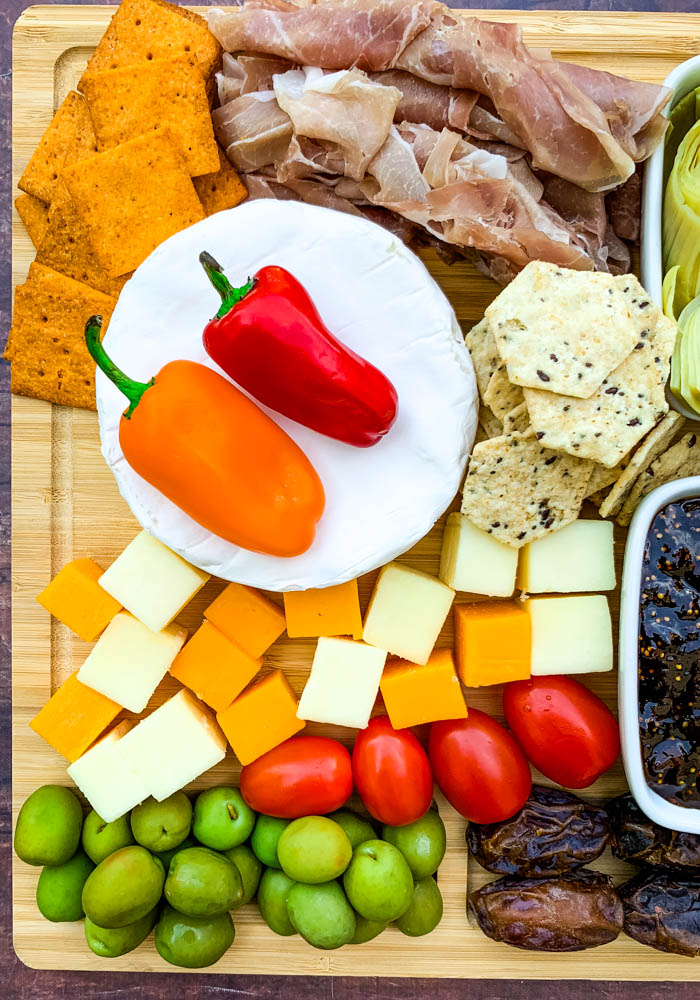
How Long it Can Sit Out
It can typically stay out at room temperature for about 2 hours. However, this time frame can vary based on factors like the temperature of the room and the ingredients used.
Certain items, like soft cheeses, cured meats, or dairy-based dips, are more prone to spoilage if left out for an extended period. Aim to consume these within the first hour or so to ensure freshness. If the room temperature is warm or if the board includes items that need refrigeration (like certain cheeses or dips), it's best to keep these items on an ice pack or a separate chilled platter to maintain their quality.
If the event lasts longer, periodically check and replenish the board. Replace items that have been sitting out for too long or appear less fresh.
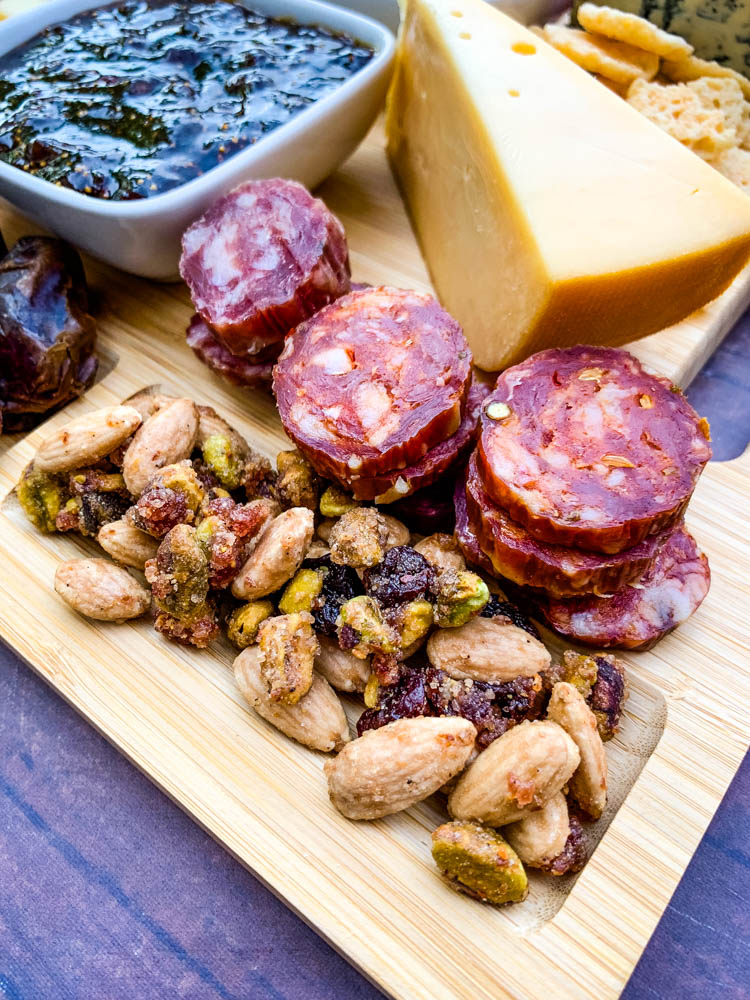
How to Store Leftovers
After the gathering, promptly refrigerate any remaining perishable items. Leftovers can typically be stored for a few days and used in other dishes.
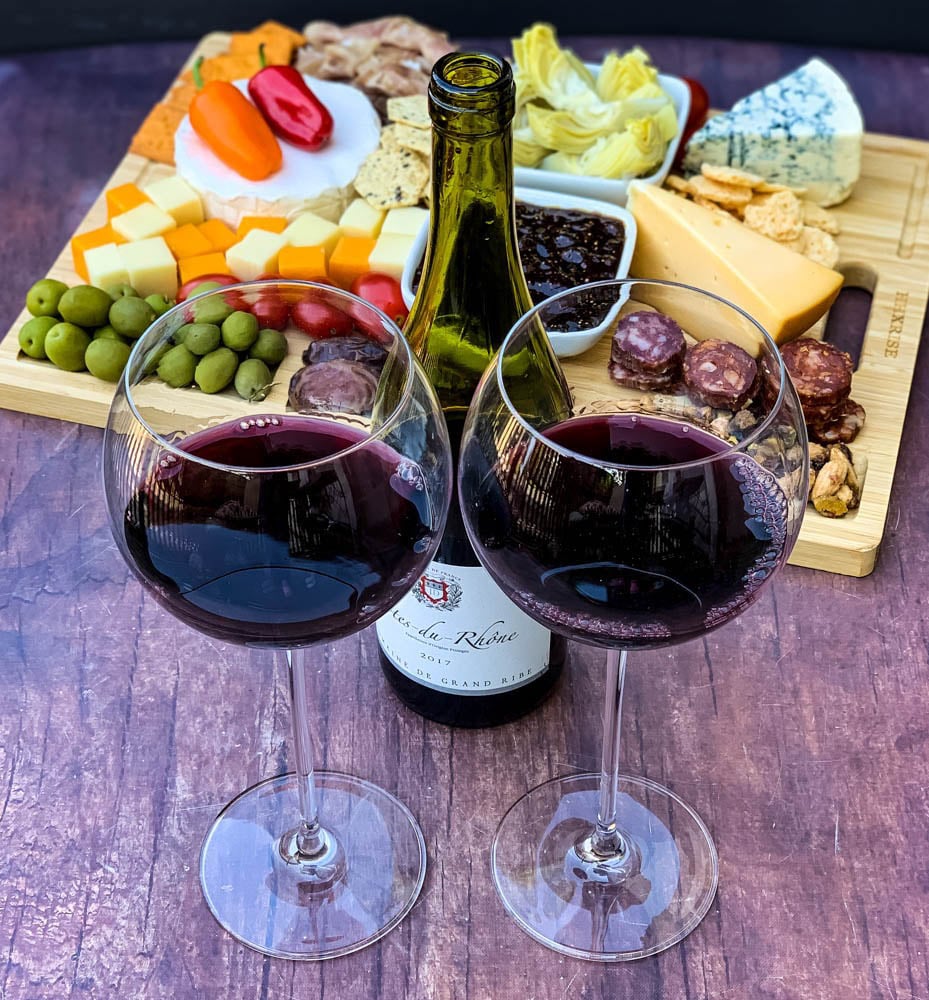
More Recipes for Entertaining
Southern Potato Salad
Easy Spaghetti Salad
Creamy Cucumber Salad
Bacon Ranch Pasta Salad
Avocado Deviled Eggs
Southern Macaroni Salad
Southern Baked Beans
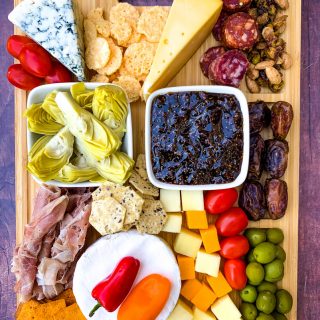
How to Make the Best Charcuterie and Cheese Board
Want to save this recipe for later?
Equipment
Ingredients
- various cured (I preferred non-cured versions) meats such as proscuitto, salami, pepperoni, dried chorizo, or sausage Standard rule of thumb is 2oz of meat per person you plan to serve
- variety of cheeses (brie, goat cheese, parmesan cheese, havarti, white cheddar, sharp cheddar, gouda)
- cured olives
- artichoke hearts
- mini fresh red peppers
- fig spread
- pistachios
- dried dates
- parmesan cheese crisps
- cheddar crackers
- grapes
- honey
Instructions
- Use a large serving board, cutting boards work great too. Arrange the meat and cheeses throughout the plate. I roll up the prosciutto and I like to angle the block cheese. You can stack meat like salami.
- Decide which ingredients will be served in dipping bowls, such as jams, spreads, or artichokes.
- Carefully style the crackers, sweet treats, nuts, vegetables, etc around the board and serving bowls.
Video
Nutrition
Nutrition Data
Macros are provided as a courtesy and should not be construed as a guarantee. This information is calculated using MyFitnessPal.com. To obtain the most accurate nutritional information in a given recipe, you should calculate the nutritional information with the actual ingredients used in your recipe, using your preferred nutrition calculator. You are solely responsible for ensuring that any nutritional information provided is accurate, complete, and useful.

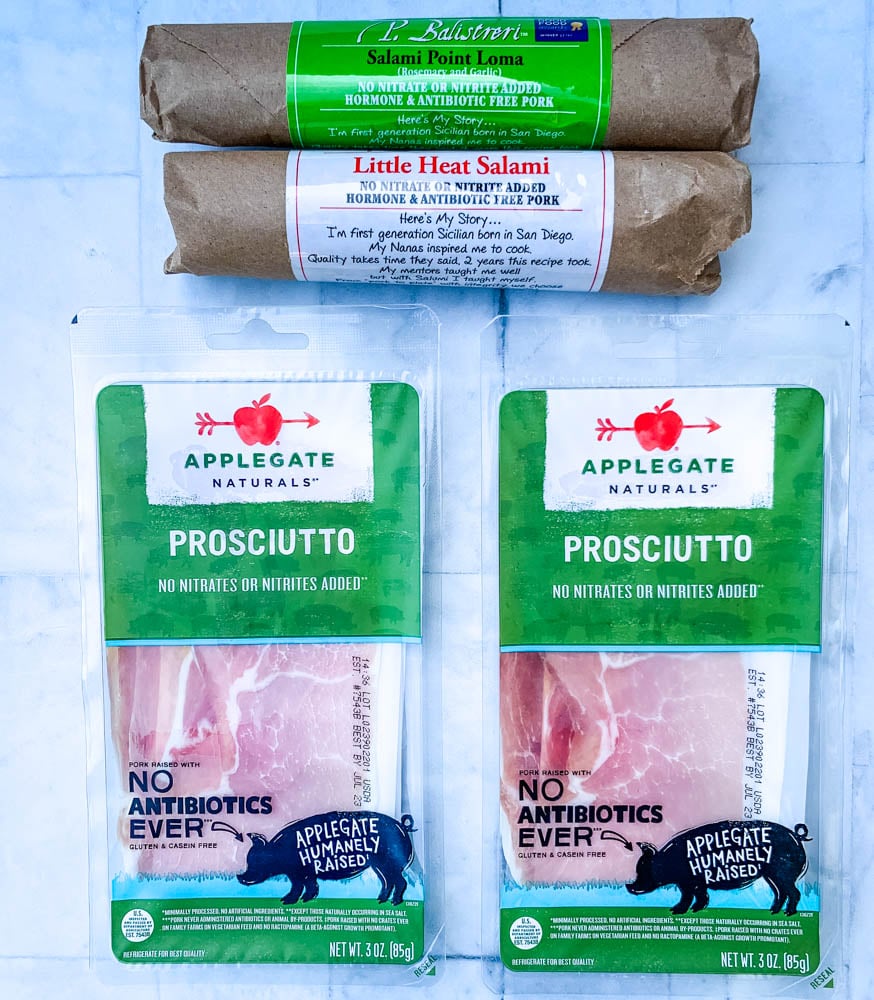
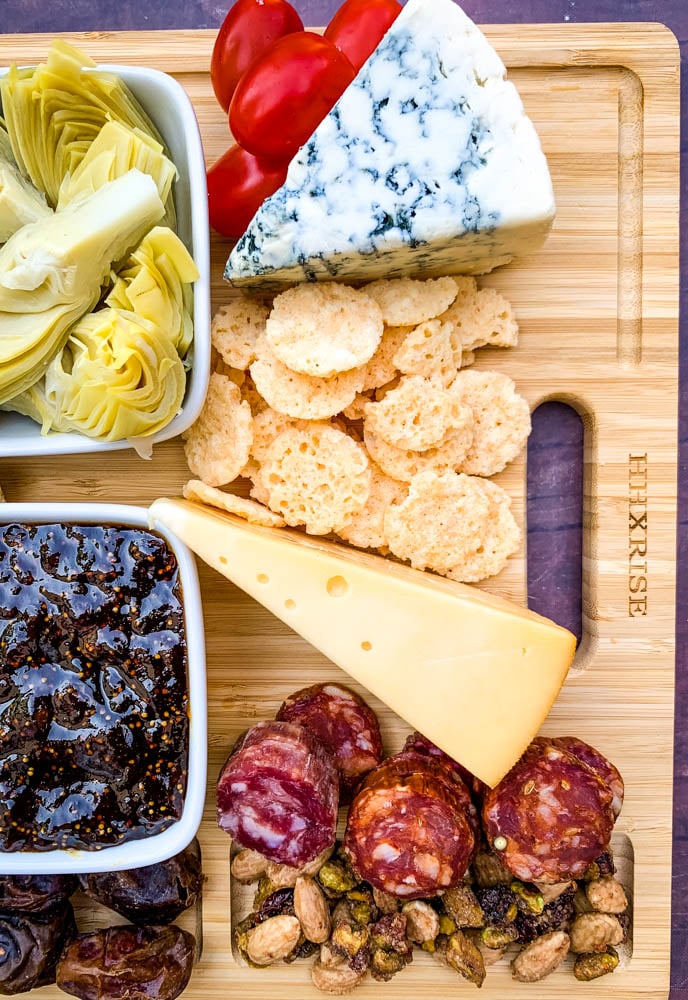
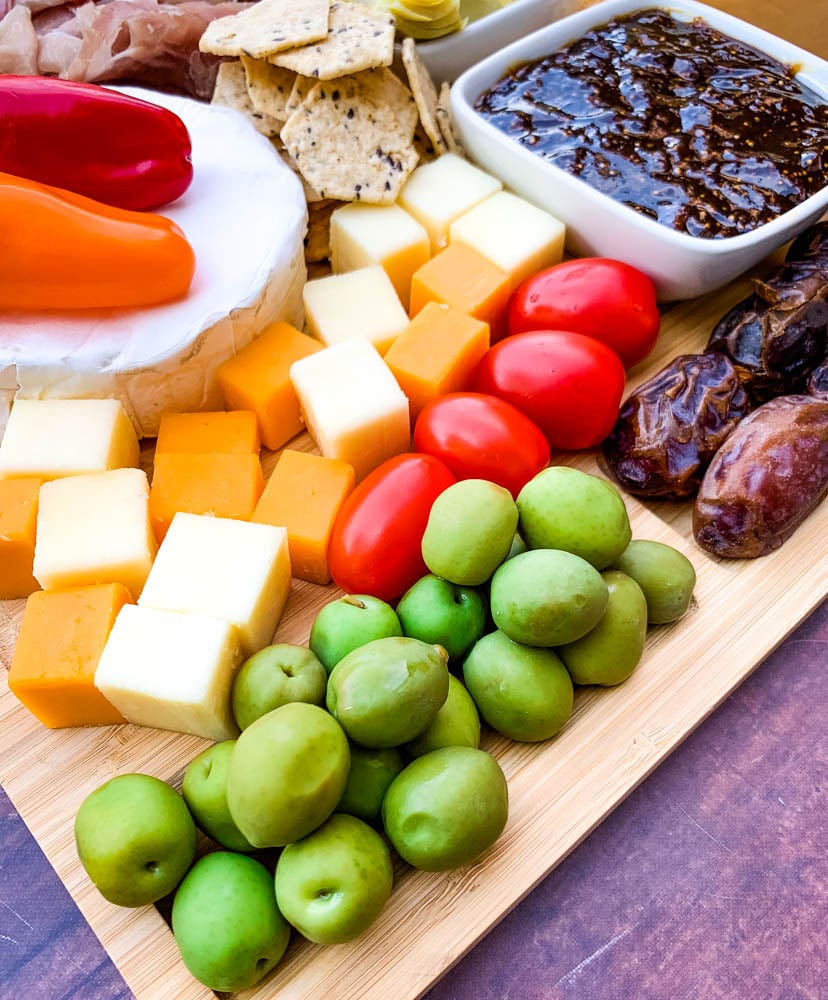
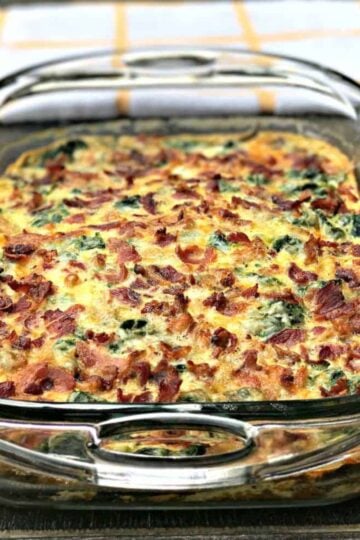
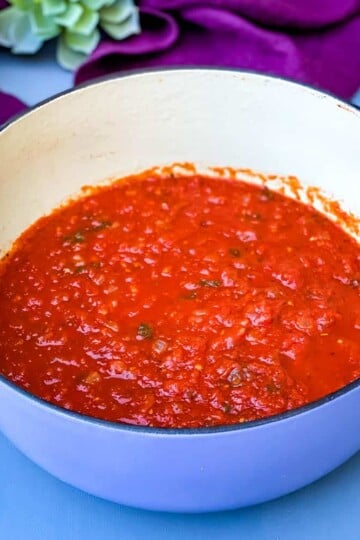
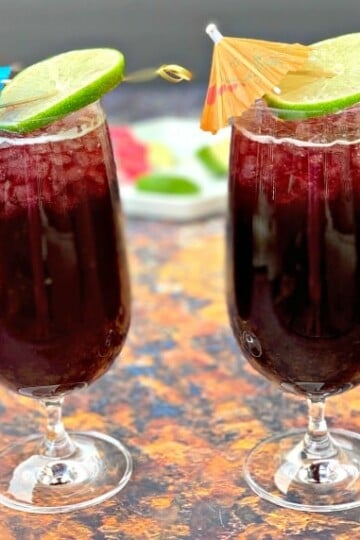
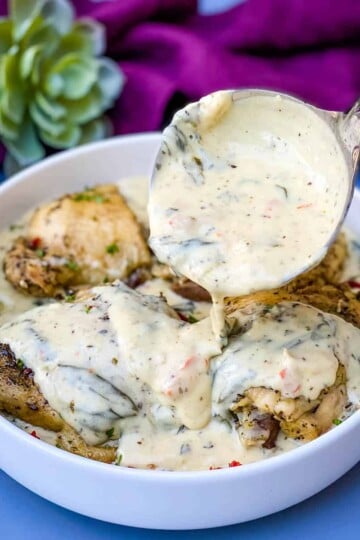
Leave a Reply